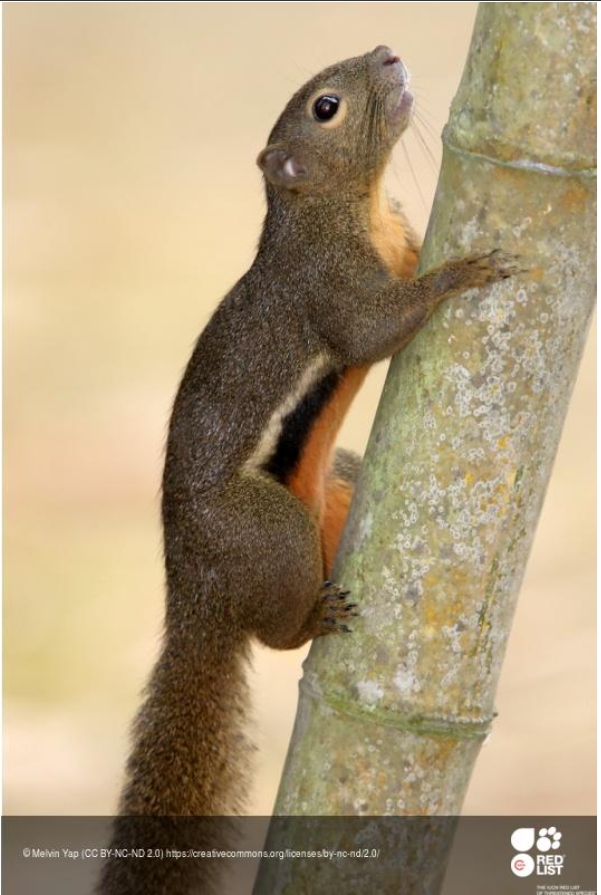| Citation |
Duckworth, J.W. 2016. Callosciurus notatus (errata version published in 2017). The IUCN Red List of Threatened Species 2016: e.T3600A115065317. https://dx.doi.org/10.2305/IUCN.UK.2016-3.RLTS.T3600A22254046.en. Downloaded on 28 June 2021. |
Description |
JUSTIFICATION
This species is listed as Least Concern in view of its wide distribution, large population, tolerance of a degree of habitat modification, and because it is unlikely to be declining at nearly the rate required to qualify for listing in a threatened category.
RANGE DESCRIPTION
This species is found from Peninsular Malaysia and peninsula Thailand to Java, Bali, Lombok, and Borneo (Lekagul and McNeely 1988, Thorington and Hoffmann 2005). It is also widespread on smaller islands. The population on Salajar island, south of Sulawesi, has been introduced possibly from Java (Musser 1987). This species is found from lowland up to 1,500 m.
DESCRIPTION
This species is abundant and widespread. It was the most abundant of its genus found in a survey conducted by Saiful and Nordin (2004) in Peninsular Malaysia (Weng River sub-catchment), with a density of 5.35 ± 1.73 individuals/km2. Evidently it has greatly expanded with human encroachment on Sundaic forests (W. Duckworth et al. pers. comm.). This species is very common in oil palm plantation in Sabah, Sarawak and Peninsular Malaysia to the extent of becoming a pest.
HABITAT AND ECOLOGY
C. notatus is a very adaptable species, as it is found in secondary forests, plantations, and all kinds of habitats, though not so common in pristine forest (Payne et al. 2005, Han pers. comm. 2006). Ancestral habitats appear to be mangroves and major natural disturbances along big rivers (Payne et al. 2005). Now it is very common in towns, scrub, secondary forest, forest edge and urban parks (Payne et al. 2005, J. W. Duckworth et al. pers. comm. 2006).
This is a diurnal and arboreal species (Saiful and Nordin 2004), though it dies descend to the ground to forage (Han pers. comm. 2006). The diet of this species consists of fruit (42%) and bark 40% (A. Saiful pers. comm. 2006), as well as insects and rubber tree latex (Lekagul and McNeely 1988).
THREATS
There are no major threats to this species.
CONSERVATION ACTIONS
It occurs in many protected areas across its range and there are no conservation measures needed for this species (J.W. Duckworth et al. pers. comm. 2006). |

